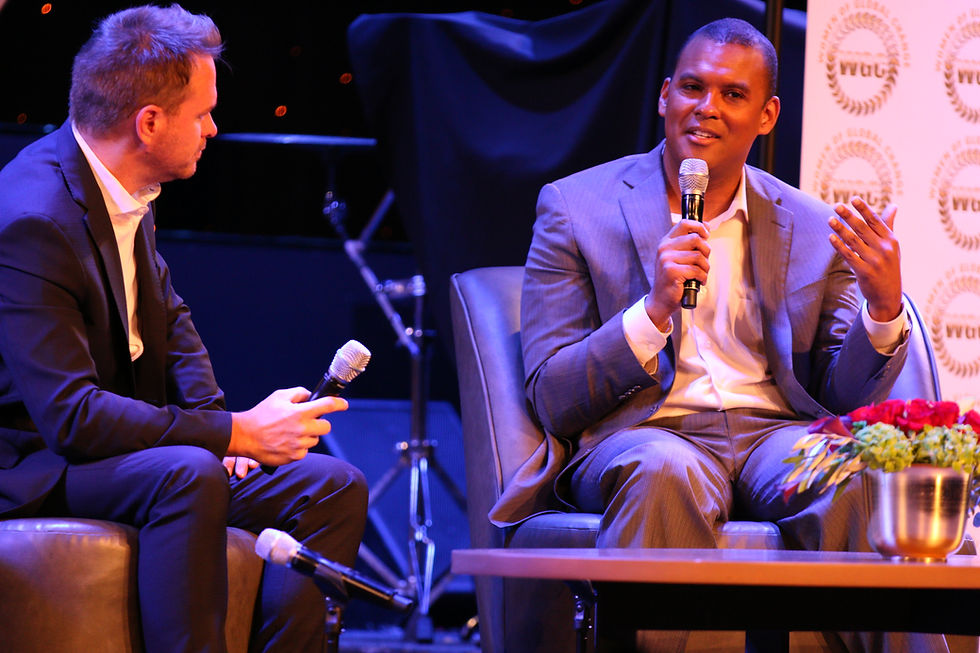Transparency in the Age of Accountability: Three Ways For CEOs to Stay on the Offensive
- The Ascendant Group - CEO Branding

- Oct 31, 2020
- 3 min read
Updated: Nov 23, 2020

Marva Collins once said, “If you can’t make a mistake, you can’t make anything.” Mistakes are a part of life and one of the most effective ways of learning, creating, and innovating. So why is it that people are afraid to make mistakes and try to cover them up when they do? CEOs especially appear to take every precaution to prevent or hide mistakes. Perhaps it’s because when a CEO makes a mistake, it can affect the entire company and puts them under the microscope, both internally and publicly. However, the most successful leaders embrace mistakes, determine how to minimize any damage, and continue building with the knowledge gained. In today’s culture, people expect accountability, and accountability starts with transparency.
Here are three ways to reshape or polish your brand to reflect an accountable and transparent culture:
1. Make Honesty and Transparency a Priority
When someone makes a mistake, they will either react defensively or offensively. By taking a defensive stance, people either ignore or attempt to hide the fact that the mistake even happened. In either scenario, it is almost inevitable that someone will find out about the mistake, and it only takes one tweet for an entire situation to go viral. By taking an offensive stance, people acknowledge the mistake, take responsibility, and take the necessary action to learn and move on. Not only does being transparent prevent skeletons from building up in the closet, it also affords the CEO some level of control over the narrative. Whether a mistake was made due to an honest error or a lapse in judgement, consumers will oftentimes appreciate the humility that comes from being forthcoming and transparent. This appreciation will lead to stronger consumer loyalty.
2. Revise your CEO Branding Strategy
In today’s world, business to business (B2B) and business to consumer (B2C) models are quickly transforming into a human to human (H2H) model. While CEO branding can sometimes come off as egotistical or vain, the real objective is for the CEO to become the chief storyteller who emotionally connects with the target audience through strategic use of brand strategy, social media engagement, publishing, speaking engagements, and clever public relations. An emotional connection with the target audience perceives the CEO as human, builds trust, demonstrates differentiation, and generates authentic interest in the brand. Speaking about a product from a place within the heart, not the lining of one’s wallet, will lead to opportunities to talk about your product during interviews and receive organic media coverage which consumers tend to respond more positively to than traditional advertising.
3. Ensure Your CEO Brand is Reflected in Company Culture
When a CEO’s brand and values are misaligned with the company’s culture, consumers will judge the CEO and overall company as hypocritical and untrustworthy. Take a CEO who brands herself as a leader intent on reducing environmental waste, but the entire company lacks recycling bins and continuously uses disposable and nonbiodegradable items. There is a complete disconnect between the CEO’s brand values and the company’s culture. On the other hand, if there is a recycling bin in every room, employees are given biodegradable and reusable products, and bicycling or carpooling are encouraged at work and at home, suddenly the CEO’s brand values are permeating into consumers’ homes. When an entire company’s values align from the PR and social media team to publishing opportunities, consumers form a sense of trust with the company and the brand, and are reminded of this trust when they have the company’s product proudly displayed.
When a mistake happens, by using the three strategies above the CEO and the company will be in a position to recover quickly, come out stronger, and most importantly stay competitive and relevant in their field. Don’t allow one small mistake to avalanche into a company’s downfall just because you want to appear perfect. Consumers want to connect with someone they relate to. And we all make mistakes.







